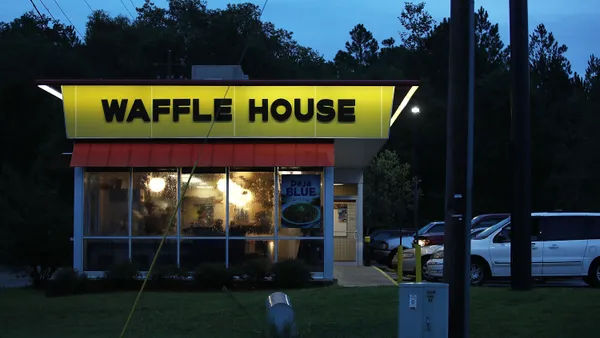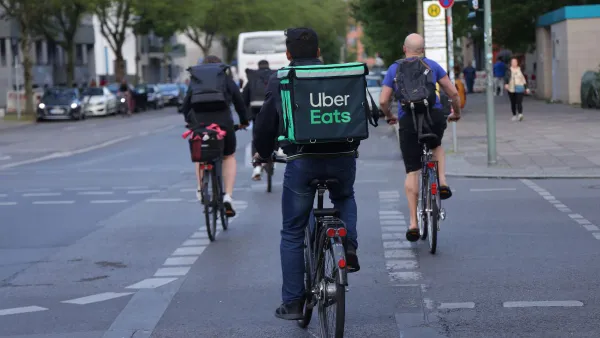Dive Brief:
- Uber will begin charging consumers fuel surcharges of $0.45 or $0.55 on Uber rides and $0.35 to $0.45 on Uber Eats orders starting Wednesday in response to rising gas prices. These surcharges will go directly to drivers and couriers, Liza Winship, Uber's head of driver operations in the U.S. and Canada, said in an emailed statement. The charges are meant to ease the burden of high gas prices, but not cover the full cost of gas.
- The surcharges will be implemented nationwide and last through May, but Uber said it will make adjustments based on feedback from drivers, couriers and customers. New York City is excluded from the surcharges because local drivers received a 5.3% pay increase on March 1 in accordance with the city's minimum earnings standard, and the majority of these workers use bikes, Uber said.
- Driver retention issues may be exacerbated as workers see their wages drop to cover climbing gas prices. DoorDash did not respond to Restaurant Dive's queries about fuel surcharges before press time.
Dive Insight:
There's risk that fuel surcharges could frustrate consumers who are already sensitive to inflationary pressure and the cost burden of delivery fees and tips. But without support, it's also possible that sky-high gas prices could spark attrition among Uber's fleet of rides and delivery drivers — especially since third-party aggregators are already struggling to keep gig workers on the job amid a historic labor shortage.
In June, Business Insider reported that Uber's overall attrition rate hovered around 20%, but this percentage was slightly higher for Uber Eats. The publication reported typical attrition percentages are in the teens.
Still, Uber said it hasn't seen a decline in the number of active drivers on its platform over the last several months. During its Q4 2021 earnings call in February, Uber CEO Dara Khosrowshahi said its driver supply had begun to improve, bringing its courier and delivery fleet to 4.4 million people, the largest pool since Q2 2020.
"In general, I would tell you that demand in the platform, both in terms of mobility and delivery, is a fast twitch muscle. It moves much faster. And earner supply on a platform, it's a slow switch muscle. It will respond — it will respond more slowly than demand, so to speak," Khosrowshahi said on the call.
The company also said that though gas costs are less than 10% of U.S. driver earnings, and that earnings "are still quite elevated relative to historical trends" and are mostly unchanged from earnings levels in January 2021.
Uber's fuel surcharges vary because they are based on the average trip length and increase in gas prices in each market. But delivery drivers are reporting that gas prices, which couriers are solely responsible for, are eating into their earnings.
On LinkedIn, delivery driver Andrea Jordan — who did not identify which company she worked for — said, "Today, when I [had] seen those gas prices, I had to rethink what delivery offers to accept. Driving 21 miles for $17 with $4.67 per gallon gas is not worth the trip. I NEED an electric vehicle."
Uber said its using the current spike in U.S. gas prices to push its fleet of rides drivers and delivery drivers to transition to electric vehicles. The company said its fleet is already relatively fuel efficient — compared to regular drivers, drivers on Uber completed trips in vehicles with 22% fuel efficiency in U.S. and Canadian markets. As of June 2021, almost 1 in every 7 Uber drivers in the U.S. and Canada use hybrids on a trips-miles-weighted basis.
Uber drivers can also earn more money by using electric vehicles with Uber's Green Future Program, which offers couriers incentives like $1 more per trip up to $4,000 per year for using an electric vehicle.
Correction: A previous version of this article incorrectly stated that Restaurant Dive didn't receive a comment from Grubhub before press time. That comment can be found here.














